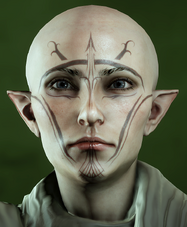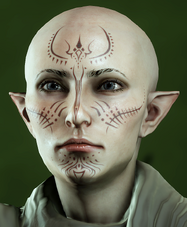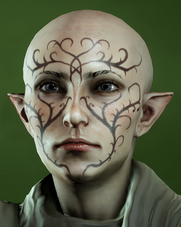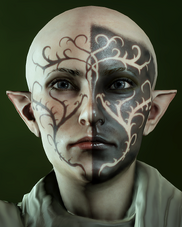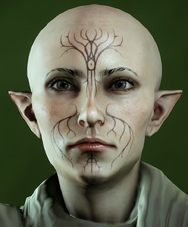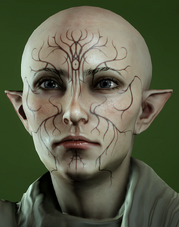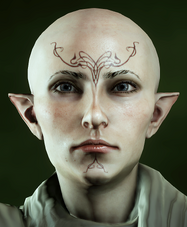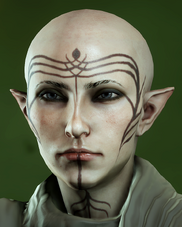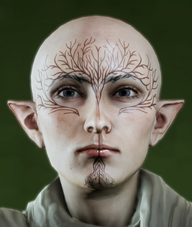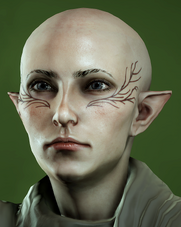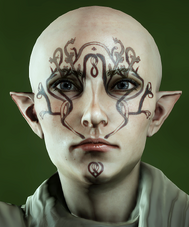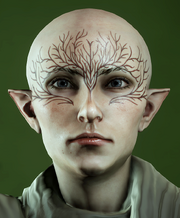
Example of Vallaslin tattoos
When the children of our people came of age, they earn the privilege of wearing the vallaslin, the blood writing. It sets us apart from the shemlen, and from the elves who have thrown their lot in with them. It reminds us that we will never again surrender our traditions and beliefs.
Vallaslin, sometimes referred to as blood writing, is what the Dalish call the intricate facial tattoos worn by all adult clan members.
Background[]
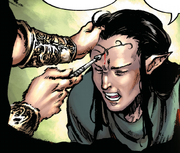
Application of the vallaslin
Many young Dalish receive their vallaslin when they are around eighteen years of age[1] or younger.[2] When a Dalish elf comes of age, they prepare to gain the vallaslin by meditating on the gods and the ways of the Dalish, and by purifying the body and the skin. When the time comes, the Keeper of the clan applies the blood writing. This is done in complete silence. Cries of pain are taken as signs of weakness. If a young elf cannot tolerate the pain of the blood writing, they are deemed unready to undertake the responsibilities of an adult. The keeper may stop the ritual if they decide that the one gaining the vallaslin is not ready. Blood writing is at least in part a religious practice, and the ink used to do so is considered sacred.
There are different designs representing deities in the Elven Pantheon. There is no design for Fen'Harel. Worshippers of the Forgotten Ones were seen wearing brilliant crimson vallaslin.[3]
History[]
The use of vallaslin during the time of Elvhenan is a much more controversial concept than believed by the Dalish. In the days of Arlathan, the tattoos were not signs of patronage to the various elven gods but, in fact, slave markings–signs of ownership–used when noble elves enslaved the lower classes; they were representations of the gods that the nobles favored.[4] Abelas and the Sentinels of the Temple of Mythal have vallaslin dedicated to Mythal etched on their faces.
Through cultural reappropriation, vallaslin is now something entirely different for the Dalish, who utilize the markings as something positive for their people.
A text on the carved tablet found in the Temple of Mythal tells of "the eventual failing" of elven markings.[5]

The Dread Wolf removes the vallaslin of the false gods from fleeing elven slaves
Designs[]

All designs available to the Dalish Warden in Dragon Age: Origins.
Thus far, three groups of Dalish have been encountered: those of the Dalish Elf Origin, those of Zathrian's clan in Nature of the Beast, and the ones found in the Exalted Plains in Dragon Age: Inquisition. Various designs of blood writing can be seen on their faces. There appear to be eight main designs, each of which comes in a simpler and a more complex version. Though similar to the main eight there are two unique designs that are used by Velanna/Seranni in Dragon Age: Origins - Awakening and Merrill in Dragon Age II.
Design 1[]
Design 2[]
Design 3[]
Design 4[]
Design 5[]
Design 6[]
Design 7[]
Design 8[]
Unique Designs[]
Dragon Age: Inquisition[]
The designs found in Dragon Age: Inquisition and their corresponding deities are pictured below.[7]
References[]
- ↑ Dragon Age: The Masked Empire
- ↑ Valorin's Journal in Something to Prove
- ↑ Sylvan Raids
- ↑ Mentioned by both Solas and Corypheus in Dragon Age: Inquisition.
- ↑ Where Willows Wail from
 Dragon Age: The World of Thedas, vol. 2, p. 201
Dragon Age: The World of Thedas, vol. 2, p. 201
- ↑
 Mary Kirby. https://twitter.com/BioMaryKirby/status/1374133899048062976 . Twitter.
Mary Kirby. https://twitter.com/BioMaryKirby/status/1374133899048062976 . Twitter.
- ↑
 Matt Rhodes. "Dalish Tattoos" . Tumblr.
Matt Rhodes. "Dalish Tattoos" . Tumblr.


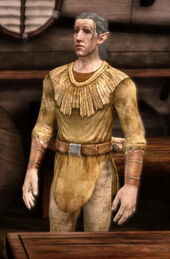
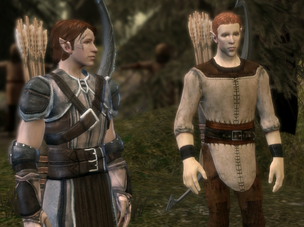
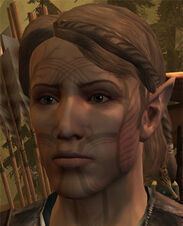
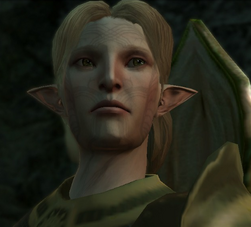

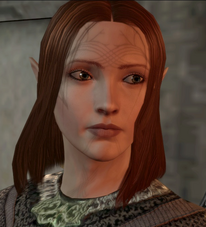





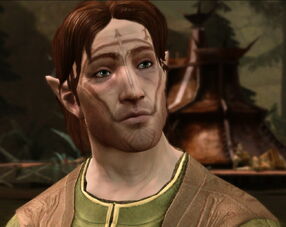

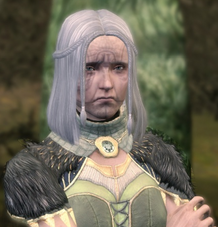

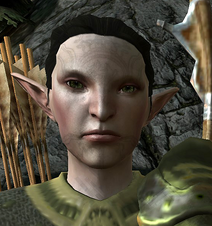
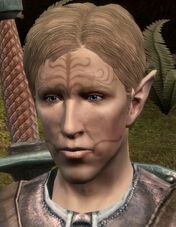
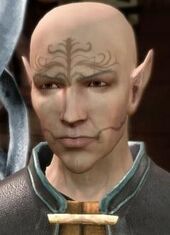
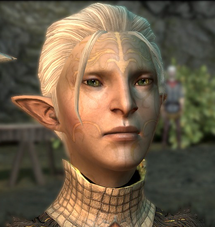

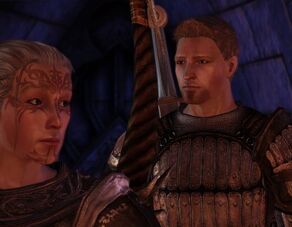




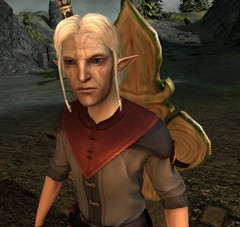

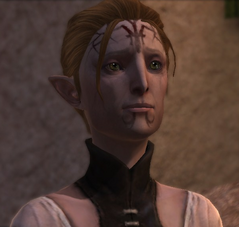

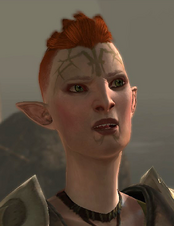
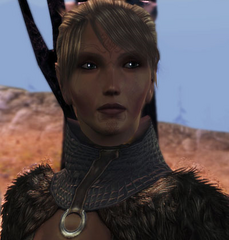
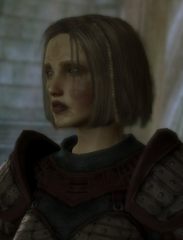
![Merrill Portrait.png (332 KB) Merrill, a potential companion in Dragon Age II (design is similar to design 8 from Origins, though notably different and not used by any other characters; honors Mythal)[6]](https://static.wikia.nocookie.net/dragonage/images/a/aa/Merrill_Portrait.png/revision/latest/scale-to-width-down/199?cb=20110314100427)

